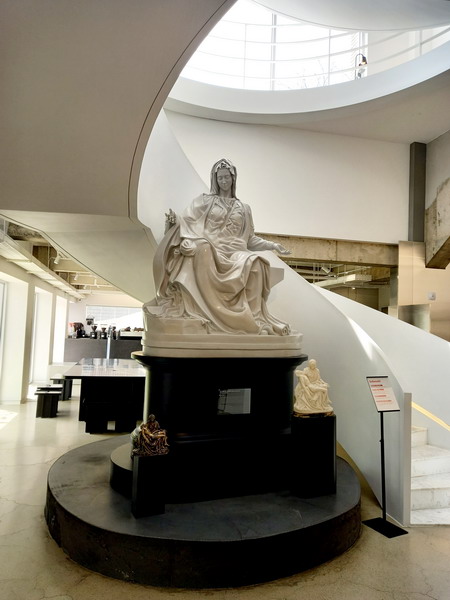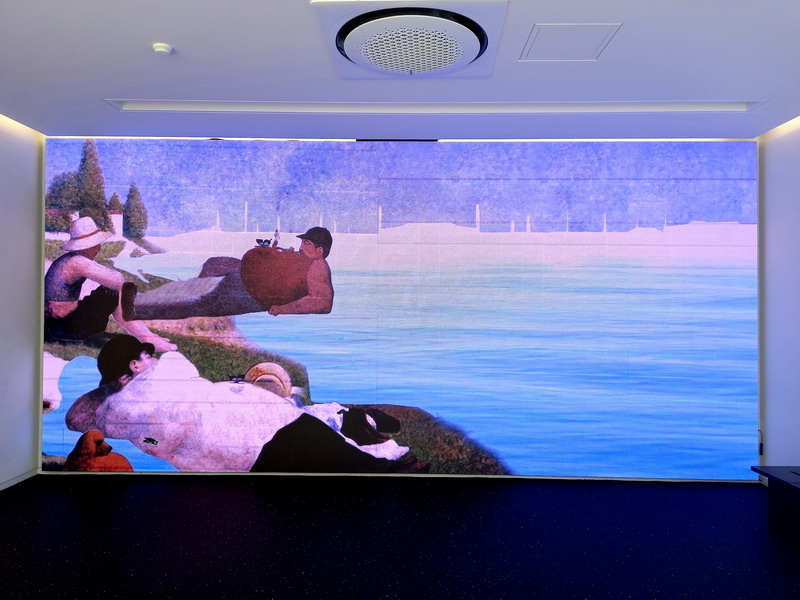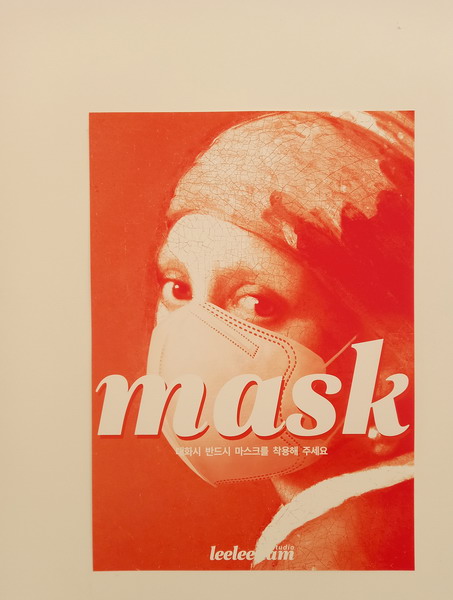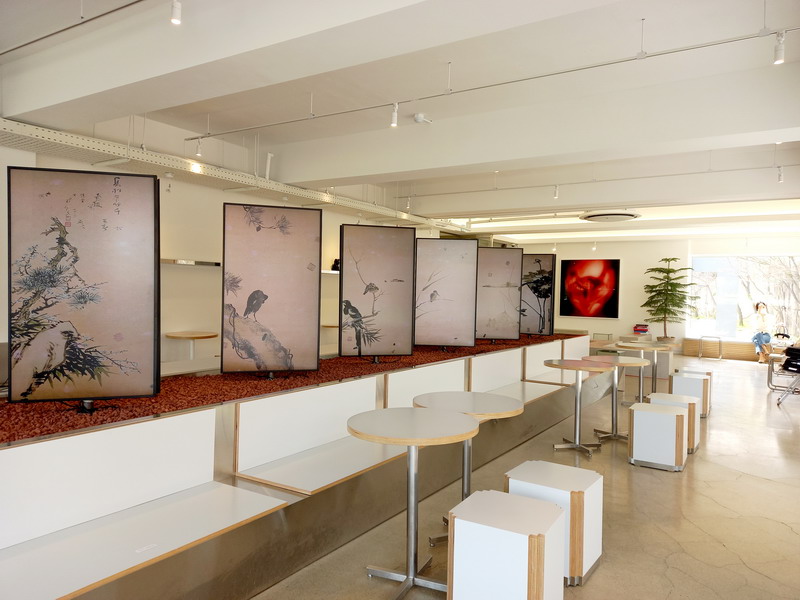Lee Lee Nam Studio: A Museum, Café, … and K-Drama Filming Location!
Reviewed by Jana Milosavljevic.
Gwangju’s neighborhood of Yangnim-dong located in Nam-gu has been gathering more and more attention recently, and the Lee Lee Nam Studio surely one of the reasons. The Yangnim-dong area, also referred to as a “modern historical and cultural village” where past and present coexist, is a collage of the most interesting fusion of the contemporary and the traditional, both visually, through architecture, and in stories that these places keep alive. Buildings and monuments that symbolize the modernization period of Gwangju can take you down the path of history as far back as 100 years, when the first Christian missionaries from the West came to Gwangju, while at the same time, the Lee Lee Nam Studio can transport you to the future where art and media are one.

This creative studio that Lee Lee Nam, a world-renowned contemporary media artist born in Damyang, had been preparing for three years, opened in November last year and emerged as what Korean modern slang defines as a “hot place” (핫플레이스) as soon as it opened. The artist mentioned in many interviews that he had always been dreaming of a place where he would be able to exhibit his own work as well as a place where Gwangju citizens could come and truly experience media art. Furthermore, Lee was adamant about keeping the foundations of history when creating the studio, quite literally. The building that used to be the residence of missionaries Barbara Peterson and her husband, the late Arnold Peterson, as well as a pharmaceutical company building, were witnesses to helicopter shootings during the Gwangju May 18 Democratic Movement. Therefore, in order to preserve the history of Yangnim-dong, a treasure trove of modern culture, the building that is now home to the studio was only renovated and redesigned.
The studio consists of three areas – the writer’s studio, the Media Art Museum (M.A.M.), and the media café. The building catches one’s eye even before entering. Some of Lee’s works are displayed even in front of the remodeled building. Through one of many windows installed instead of a wall, a wall-sized LED screen – the Media Wall – presents Lee’s art so that visitors can experience the studio’s media art from the outside as well.

The moment you enter the ground floor, the feeling of becoming one with the art overwhelms you, since both the building’s exterior and interior feel like works of art themselves. Wherever you may roam while enjoying Lee’s works throughout the exhibition, small café tables and chairs are scattered about, and you can order coffee or dessert immediately on your left-hand side upon entering, however, it is not compulsory – you are free to just look around and appreciate the Media Art Museum.
Some of Lee Lee Nam’s representative works juxtapose old European master paintings and traditional Asian art with modern-day imagery through digital and video mediums, and many of them can be seen right here in the studio. Among many other works, a series of “Traditional Painting – Happiness” (고전회화 – 해피니스) displayed on eight monitors is installed on the ground floor. Also, works inspired by the Dutch Golden Age painter Johannes Vermeer’s famous painting “Girl with a Pearl Earring” can be seen on the walls. The “centerpiece” of the first floor, however, is undoubtedly “Reborn Light” (다시 태어나는 빛), an homage to Michelangelo’s famous sculpture “The Pietà.” Lee’s piece shows the Virgin Mary at the bottom of the studio’s spiral stairs; however, the body of Jesus is not spread across her lap as in the original but floating high above in mid-air near the rooftop. The natural light that shines down on the sculpture through the glass ceiling creates the effect of a halo that gives this piece of art an even more ethereal feel. The rooftop area of the studio is also open, and apart from Lee’s sculptures, you can enjoy the panoramic view of Yangnim-dong from there.

Lee Lee Nam said that he wished to create “a place for exchanging a cup of coffee and media art,” and judging by the number of visitors that enjoy viewing the various digital screens presenting Lee’s take on traditional Asian motifs or European classic works of art laid out between coffee tables over a cup of coffee, he has succeeded. Nevertheless, the visitors do not only enjoy the art and coffee when they visit the Lee Lee Nam Studio. Many of the visitors, especially the younger generation, take countless photos to upload on social media (known as the trend of taking a “proof shot” – injeungsyat, 인증샷, in Korean) against the unique backdrop of Lee Lee Nam’s art and studio spaces.

Finally, there is one extra piece of information for all the K-drama lovers. Even though the story of last year’s popular Netflix release Lovestruck in the City (도시남녀의 사랑법) takes place mostly in Seoul, the party that happens in Episode 16 of Season 1 was actually shot in none other than Gwangju’s Lee Lee Nam Studio. For those who have seen the drama, this might be one more reason to visit, and for those who have not seen it yet – do not worry – I am not revealing any spoilers, but I am sure you will enjoy the experience of visiting the Lee Lee Nam Studio even more after watching the drama!
Sources
https://www.leeleenam.com/
http://www.kwangju.co.kr/ article.php? aid=1609117200711407317
Photographs by Jana Milosavljevic.
Lee Lee Nam Studio (이이남스튜디오)
Address
10 Jejung-ro 47-beon-gil, Nam-gu, Gwangju (Yangnim-dong)
광주 남구 제중로 47번길 10 (양림동 228-11)
Operating Hours: Tue.–Sun. 11:00 a.m. – 10:00 p.m. (closed on Mondays)
Phone: 062-655-5030
Instagram: @leeleenam_studio
The Reviewer
Jana Milosavljevic was born and raised in Serbia. She currently lives in Gwangju, and she loves exploring and learning about new cultures and meeting new people. In order to be able to communicate with as many people as possible, apart from Serbian, she has learned English, Japanese, Korean, and German. Instagram: @janemiya







